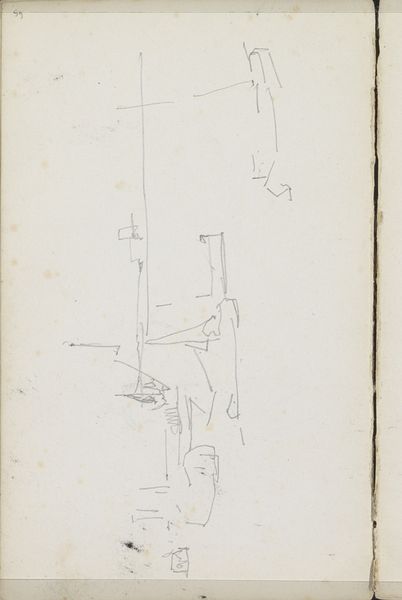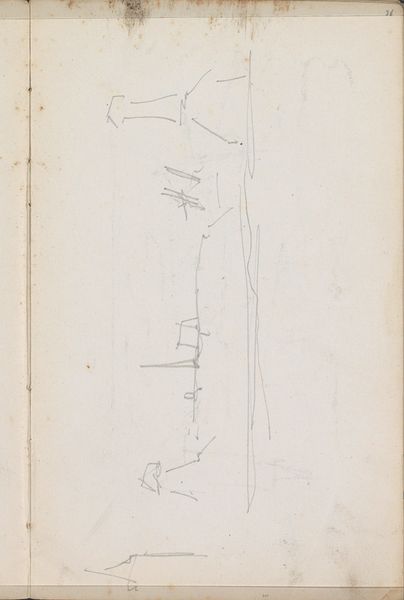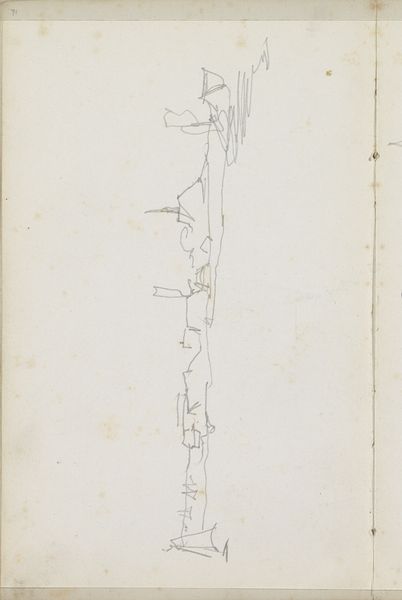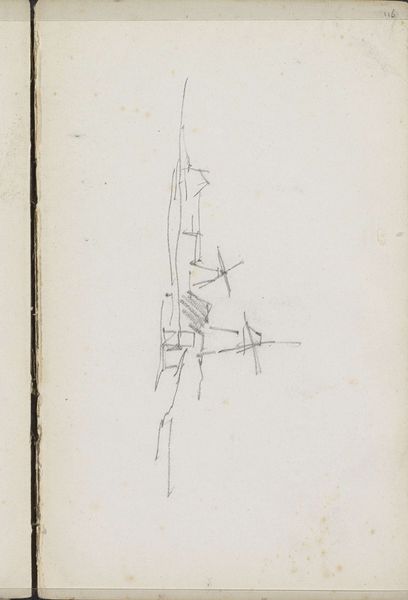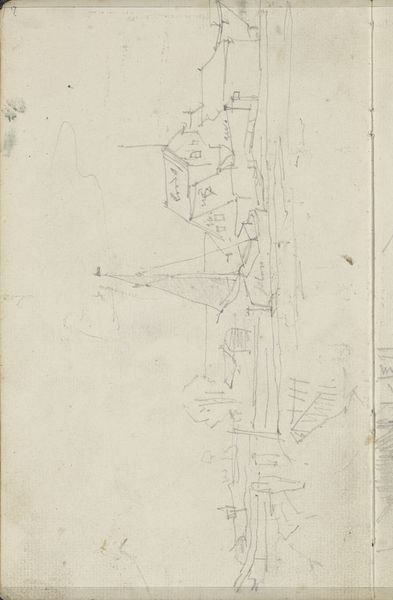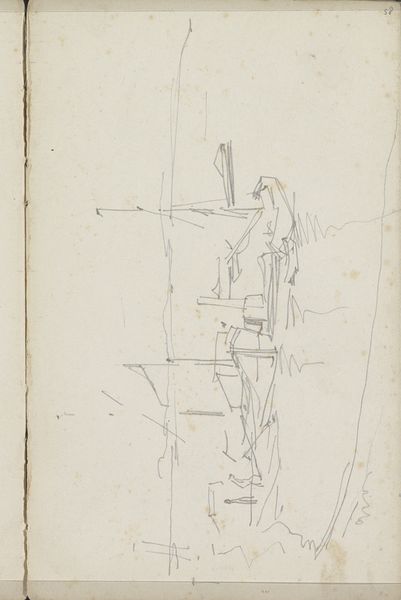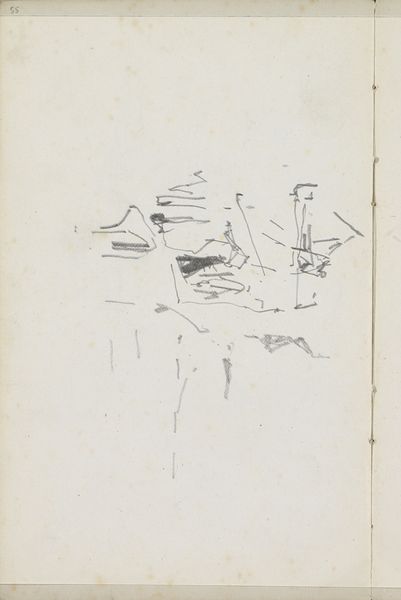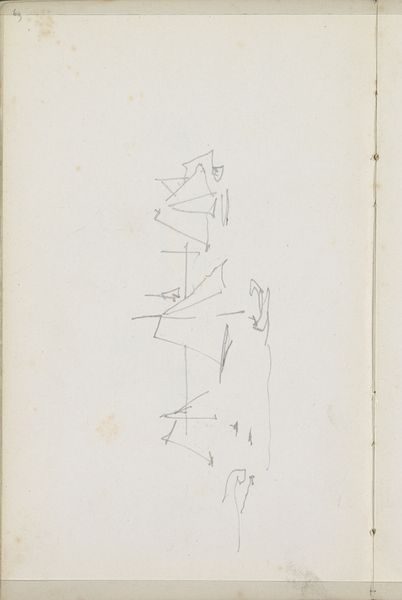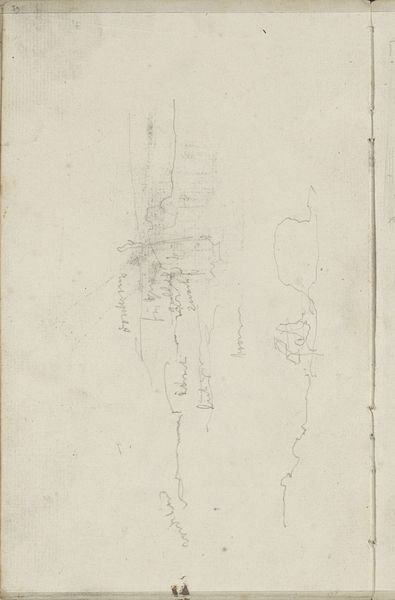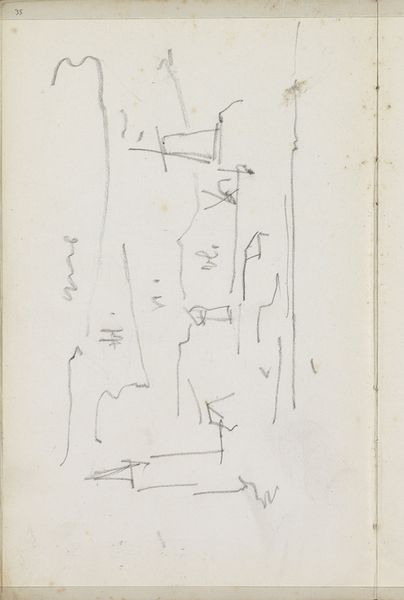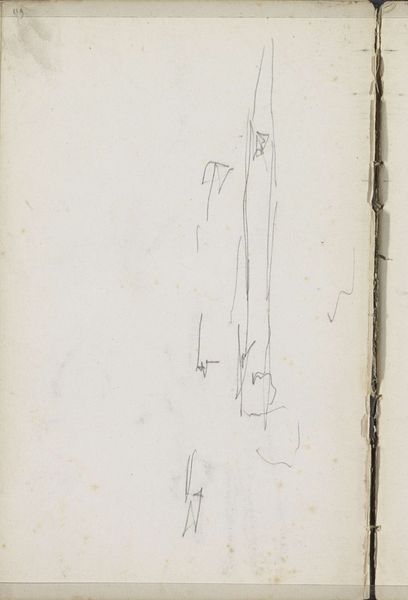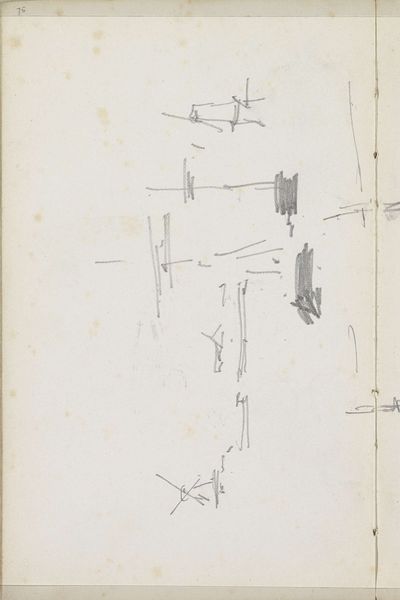
Stadsgezicht met twee molens, mogelijk Gorinchem 1880 - 1882
0:00
0:00
drawing, pencil
#
drawing
#
impressionism
#
landscape
#
pencil
#
watercolor
Copyright: Rijks Museum: Open Domain
Editor: Here we have George Hendrik Breitner's "Cityscape with Two Windmills, possibly Gorinchem," a pencil drawing from around 1880 to 1882. It’s interesting, it feels very skeletal, like the bare bones of a city emerging from the paper. What do you make of it? Curator: It's more than just a landscape sketch, I think. Breitner’s focus wasn't simply on picturesque windmills, but on documenting the urban experience. Notice how he captures the essence of industrial change; windmills in a city context signal transition, challenging the established rural imagery often depicted at the time. Think about how this period also saw increasing rural to urban migration, so who exactly would have been looking at this drawing, and what would it have meant to them? Editor: That's interesting. So it’s about Breitner observing a society in flux? I guess the starkness adds to that feeling. Curator: Precisely! The drawing itself becomes a record of evolving social spaces, shifting artistic priorities and societal concerns, using realism to comment on urban life and implicitly challenging the romantic landscape tradition. Why, do you think, would he leave it so bare and seemingly unfinished? Editor: Maybe he wanted to capture a fleeting moment, something immediate, instead of a perfectly polished scene? I wonder if his intended audience would see the windmills as a symbol of a past fading away, or if the mills are even the subject at all... Curator: Exactly, and the Rijksmuseum exhibiting it now—how does that shape our current understanding and the dialogue around Dutch identity and industrialisation? What's deemed worthy of preservation speaks volumes. Editor: Wow, I didn’t think a simple sketch could say so much. Now I’m seeing it less as just a preliminary drawing, and more as a statement about a specific moment in time. Curator: Exactly! That's the power of looking at art through a historical lens.
Comments
No comments
Be the first to comment and join the conversation on the ultimate creative platform.
